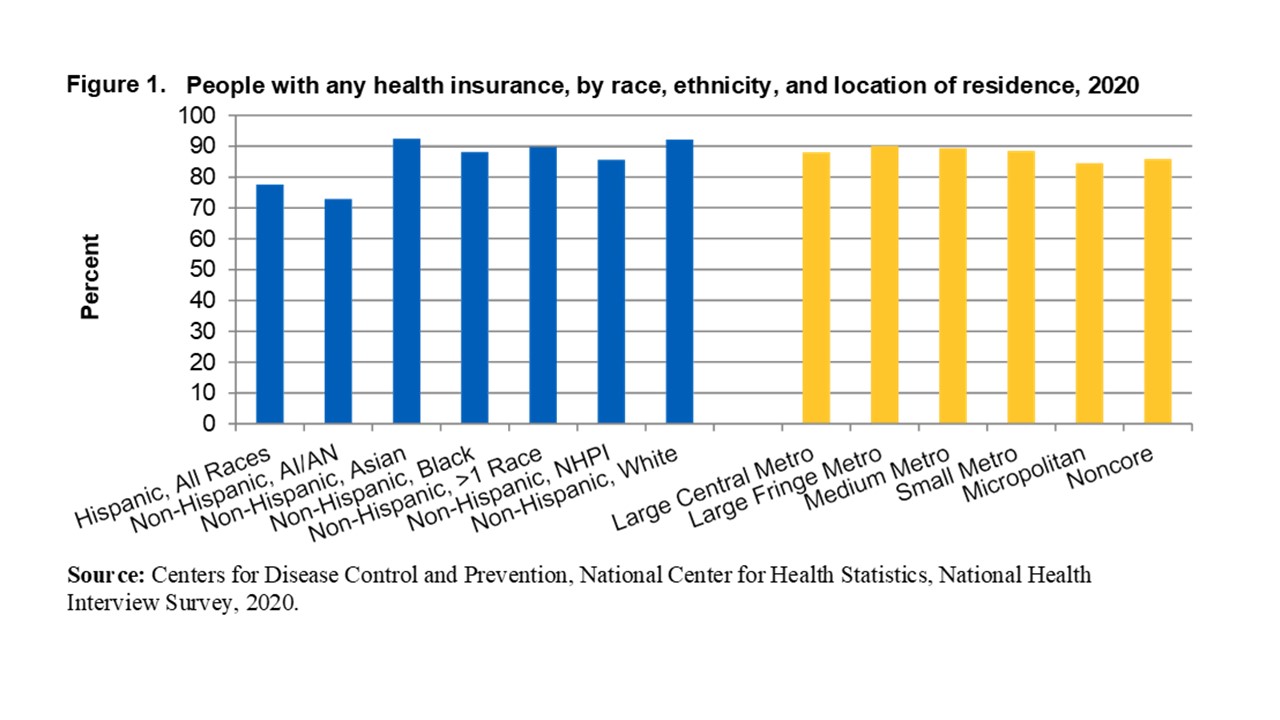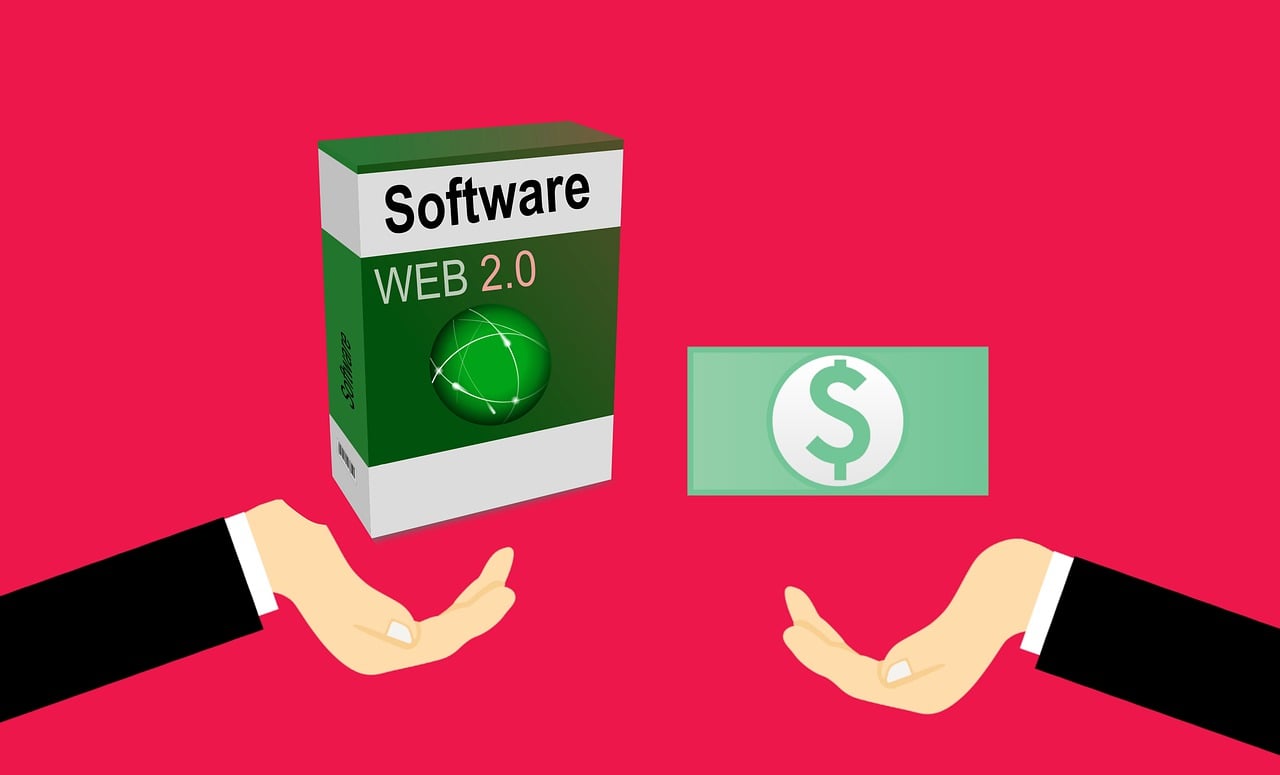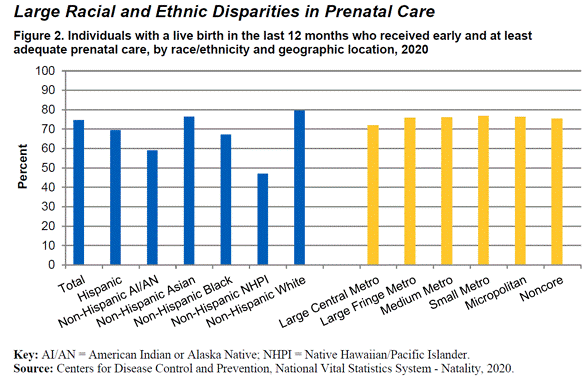Brand Surveys and Testing

Mar
Can Psychographic Segmentation Help Financial Services Companies?
jerry9789 0 comments Brand Surveys and Testing, Burning Questions
Why Is Market Segmentation Effective?
By now you’ve most likely come across the idea that instead of using the “blanket” approach for marketing by using demographic or geographic data, you and your marketing goals can be better served by identifying your ideal customer and then focusing and tailoring your marketing campaign towards that consumer. This is achieved through a high-quality segmentation study and persona development, as was the case with the “Strivers” and “Empath” personas in our Banner Bank and Capital One case studies, respectively.
To sum it up, when we developed a brand model identifying “Strivers” as the primary segment Banner Bank should focus on, they were able to not only meet but also exceed all key Striver product targets system-wide after two years of implementing the program. Also, we recommended Capital One focus their brand campaign efforts for a personal investment mobile app on the pragmatic thinking type “Empath,” resulting in a highly successful new product introduction. You can learn more about these two case studies and how great research can help financial services companies here.
By recognizing your profit-optimal customer through market segmentation, a financial services company can effectively focus its marketing efforts and resources, optimizing or helping drive down costs, while at the same time engaging more efficiently with the consumer, enhancing satisfaction and loyalty.
But what if we tell you that you can also segment your financial services market so you target not one but different groups of customers?
Copyright geralt (Pixabay)
Single-segment Focus vs. Multi-segment Strategies
“Now hold on a minute,” you might say in your mind as you read that last line. “Didn’t you just say at the beginning of this that identifying your best customer is better than the ‘blanket’ approach?”
Yes, we did say that but no, this is no “blanket” approach. The main reason a financial services company wants to complete market segmentation research is so they can gain actionable insights into how to sell more of their products or services. With high-quality segmentation studies, breaking down your financial services market into different groups uncovers a variety of insights allowing you to craft and leverage different marketing strategies toward these segments. With this data-driven approach, customer segmentation helps financial services companies decide how to offer a customized journey to different kinds of consumers. It also provides the opportunity to tap into niche segments, which are usually smaller groups with considerable potential.
Think of it this way: instead of a blanket, what you have is a different set of marketing playbooks for your various customer segments. The blanket covers primarily the “who” of your market; each of your playbooks identifies not only “who” they are for but also deep dive into answering questions like “what” type of buyer behavior they have, “why” they behave this way, and “how” best to approach and engage them.
Copyright Gerd Altmann
Why Use Psychographic Segmentation?
Generally, four types of market segmentations can provide a financial services company with actionable segments: Geographic Segmentation, Demographic Segmentation, Behavioral Segmentation, and Attitudinal or Psychographic Segmentation. Out of these four, we’ll be focusing on Attitudinal or Psychographic Segmentation, as it is often considered the most useful way to segment an audience.
Attitudinal or Psychographic Segmentation separates customers by how they think and feel, their attitudes and values. Essentially, it aims to become a window into a buyer’s thought process. It is often considered the most useful segmentation approach because it provides the clearest actionable steps for a company to take as they try to target each segment.
Not only do you gain a deeper understanding of who your customer is, but your financial institution can map out the customer journey more effectively and efficiently with Psychographic Segmentation. It also allows the financial services company to recognize opportunities to offer different or new products/services in response to changes in consumer behavior. In addition to improved customer satisfaction and retention resulting from a client feeling valued, a financial institution that effectively engages with its consumers can also enjoy increased brand perception, helping with word-of-mouth and referrals as well as stand out from the competition.
Segmentation study data can come from several sources including survey data, observational data, public panel data, customer relationship management (CRM) databases, and even large-scale public databases such as Data Axle (previously InfoUSA), Experian, LiveRamp (previously Acxiom), and the like. It’s also possible to append demographic and behavioral data to your company’s house list. A financial services company is already sitting on a large pool of customer data; while it’s easy to go down the route of Geographic or Demographic Segmentation when analyzing all that information, converting those data into actionable insights with Psychographic Segmentation would lead to more personalized and meaningful buyer experiences.
Whether it’s for single or multiple segments, Psychographic Segmentation studies can tell you why a particular marketing or messaging approach to a particular segment is likely to be profitable. They can also tell you how to make adjustments toward more effective approaches when the standard approaches are not working. There are many financial services companies that tried demographic targeting and were disappointed with the results, then switched to psychographic targeting and found that their messaging strategies produced much higher rates of response and conversion.
Copyright Andrea Piacquadio
Cascade Strategies combines the most advanced AI and machine learning tools with market research expertise from over three decades of experience. Let us help your financial services firm convert your customer data into valuable, real, and actionable business insights. Don’t settle for a simple breakdown of your customer data; our experienced team strives for genuine breakthroughs by imaginatively interpreting all that complex quantitative segmentation data. We can also develop creative briefs that can be used for your advertising and website strategy based on the segments we discover, as well as tackle practical tasks, such as predicting the likely revenue to flow from campaigns directed toward specific consumer segments and measuring the actual monetary effectiveness of such campaigns. Contact Cascade Strategies today to see how our approach to segmentation studies can give you real business insights.

Aug
Nursing Homes Close as Need for Care Grows
jerry9789 0 comments Brand Surveys and Testing, Brandview World
Nursing Home Challenges
According to a report by the American Health Care Association and National Center for Assisted Living (AHCA/NCAL) in April 2022, more than 1,000 nursing homes have closed since 2015. This breaks down to 776 closures before the COVID-19 pandemic and 327 closures during the pandemic.
The same report also projected 400 nursing homes to close in 2022 based on financials at the time. While the Centers for Medicare & Medicaid Services reported 135 nursing homes closing in 2022, it is believed the number could be higher. This is due to possible discrepancies between the time a closure plan is submitted by a facility and its full execution to be listed in the federal database.
Staffing shortages and low reimbursement have long been recognized as factors for nursing home closures even before the pandemic. Rising wages and increased operation and maintenance costs in recent years exacerbated the situation, especially in rural areas.
The Impact of Nursing Home Closings
These closures resulted in former residents transferring to another facility, which in most cases, was farther from home. Some even must move twice after the first nursing home they transferred to subsequently closed. The process could also take weeks as social workers look for placements so a patient might find themself staying in a hospital in the meantime. Conversely, some nursing care facilities are keeping beds vacant because they don’t have enough workers.
Amidst these challenges, the need for long-term care grows with baby boomers joining this group.
Copyright Kampus Production
Nursing Home Alternatives
While the pandemic put a spotlight on the difficulties faced by the nursing care industry, it also opens opportunities for reforming and improving nursing homes. It also paves the way for exploring nursing home alternatives, such as in-home care for seniors. However, home care may prove to be the more expensive option and while it offers more personal and tailored assistance, you might have a senior who prefers or thrives more in a group setting like the one offered by assisted living communities.
Then there are group homes and family-style nursing homes, which are both small-scale options for assisted living. While a typical nursing home holds over 100 resident beds on average, a group home can house between five to 10 people (or 20, depending on the state) while family-style homes host 10 to 20 beds. These setups allow for more personalized care and a higher staff-to-client ratio in a sociable, homelike setting with home-cooked meals.
Due to being smaller in scale and not as advertised as regular nursing facilities, most group homes might slip past the radar of older adults or their loved ones seeking assisted living. With well-developed branding, however, smaller-scale assisted living communities can stand out even from the shadows of larger facilities and get their message across better to the seniors most suited for the living arrangements they offer.
Cascade Strategies can help you develop your branding, thanks to an array of services such as Brand Development Research and Segmentation Studies backed by over three decades of experience. Whether you are a smaller residential care home trying to get the word out or a larger assisted living community looking to reach the ideal senior or even the skilled nurses you need, we can help you find the right market research solution for your branding needs.

Jun
Great Research Can Help Assisted Living Facilities Attract the Right Clients
jerry9789 0 comments Brand Surveys and Testing, Brandview World, Burning Questions
Is your loved one’s home not as clean and tidy as before? Do they have an empty refrigerator or is it filled with spoiled food? Frequent bruises? Same clothes every day? Do they appear to become forgetful, depressed or exhibiting strange or inappropriate behaviors?
These are just some questions that HelpGuide.org has gathered when looking for signs that an older adult might need assisted living. And when these questions start crossing the minds of their loved ones, they are likely at the point they’ll begin discussing and considering this option with them.
How to properly brand your ALF
As a healthcare professional specializing in assisted living, how do you ensure that you clearly brand yourself, the services you offer and the demographic that you’re serving? How do you differentiate yourself from retirement communities designed for seniors who can generally care for themselves or nursing homes with round-the-clock medical care and supervision? How do you reach out to the right audience, the active and social older adults needing help with daily living?
The first step towards attracting the attention of the right people is making a distinction from the other types of senior living. According to Forbes.com, assisted living facilities can be freestanding communities but also part of a retirement community, nursing homes or hospitals, so it’s certainly understandable why some would be confused and lump these services together. Hence the importance of highlighting that you cater to older adults who — while independent — need assistance doing laundry, cooking, cleaning, going to the bathroom, managing medicines, or even traveling to appointments.
As noted by HelpGuide.org, assisted living offers the safety and security of 24-hour supervision. However, you will need to point out that help requires a phone call since assisted living encourages privacy and independence. In fact, some good assisted living facilities can develop a personalized plan that keeps in mind the needs, challenges and disabilities of an older adult, while still allowing enough freedom for them to do as they please with their time.
You’ll also need to be clear about the type of assisted living facility that’ll be hosting the client. Will they be moving into a residential type that’s either a converted home, apartment complex or even a renovated school? Or do you offer apartment-style living with scaled down kitchens? And if you just provide bedrooms, do they need to share a room or have the option to pay for their own at a higher cost? Does your facility host a group dining area and common areas for socialization and recreation?
How market research can help you attract the right clientele
These are critical questions that can be answered by well-designed and executed market research. And there are even more questions that you’ll discover as you develop your brand and identify how to best reach out to your ideal clients.
Copyright Marcus Aurelius (Pexels)
You’ll need to be ready to answer questions about staffing, or proactively make information like this readily available for anyone looking into their options for assisted living. How many staff do you employ that are responsible for residents’ care? How many of them are working at any given time? Do you have enough members to cover one that goes on leave? Is staffing different at night? What are their duties? Do they interact with residents? Do you have registered nurses on site? Are they able to handle or trained for emergencies?
The same goes for questions about the facility. What is the housekeeping schedule? How do you ensure the safety and security of residents? Are the bathrooms easy to access and do they have grab bars? In case of an emergency, how do residents contact the staff? How good and nutritious is the food? Can you provide information on menu options? Can a resident eat at their room? What hobbies or activities are offered onsite? Is there transportation available? What amenities are included?
More importantly, people looking into assisted living facilities are most likely going to value an environment that seems friendly, safe, and comfortable. The facility is also expected to be clean and well-maintained. And while what feels like home is subjective, being able to answer as many questions or provide pertinent information as you can puts you closer to the ideal resident.
Copyright Cottonbro Studio
Otherwise, you can help those that weren’t a good fit at the very least to understand better what they are looking for or what they need to help them in their search to find the best facility for them. They might even realize that another type of senior living might be better for them.
How Cascade Strategies can help
Cascade Strategies has been helping healthcare companies sort out issues like these for over 30 years. Thanks to an array of services such as Brand Development Research and Segmentation Studies, we are able to help healthcare companies make their brand stand out and become more profitable in addition to enlightening them on their customer types and how to best address their needs. Please see our website and case histories.
Here are some suggestions for further reading:
https://www.helpguide.org/articles/senior-housing/assisted-living-facilities.htm
https://www.seniorliving.org/assisted-living/
https://www.forbes.com/health/senior-living/how-to-find-the-best-assisted-living-facility/

Jun
Appropriate Use of AI
jerry9789 0 comments artificial intelligence, Brand Surveys and Testing, Brandview World, Burning Questions
The Rise Of AI
Believe it or not, Artificial Intelligence has existed for more than 50 years. But as the European Parliament pointed out, it wasn’t until recent advances in computing power, algorithm and data availability accelerated breakthroughs in AI technologies in modern times. 2022 alone made AI relatively mainstream with the sudden popularity of OpenAI’s ChatGPT.
But that’s not to say that AI hasn’t already been incorporated in our daily lives- from web searches to online shopping and advertising, from digital assistants on your smartphones to self-driving vehicles, from cybersecurity to the fight against disinformation on social media, AI-powered applications have been employed to enable automation and increase productivity.
The Woes Of AI
However, the rise of AI also brings concerns and worries over its expanding use across industries and day-to-day activities. Perceived negative socio-political effects, the threat of AI-powered processes taking over human employment, the advent of intelligent machines capable of evolving past their programming and human supervision- that last one is mostly inspired by the realm of science fiction but a plausible possibility nonetheless. A more grounded and present-day concern, however, is the overreliance and misuse of Artificial Intelligence.
Copyright geralt (Pixabay)
Sure, AI is able to perform a variety of simple and complex tasks by simulating human intelligence, efficiently and quickly producing objective and accurate results. However, there are some activities requiring discernment, abstraction and creativity, where AI’s approximation of human thinking falls short. Cognitive exercises like these not only need high-level thinking but also involve value judgments honed and subjected by human experience.
The Expedia Group Case Study
This brings us to our case study for the Expedia Group, whose brand has around a million hospitality partners. Their goal is to increase engagement with their partners. For five years, Expedia grouped their lodging partners, which at the time were mostly chain hotels, with a segmentation model that helped guide their partner sales teams on how they should prioritize spending their time. This “advice” Expedia provides comes through marketing, in-product or through the partner’s account manager. When a partner takes advantage of Expedia’s advice, they usually receive the booking over their competitor.
Copyright geralt (Pixabay)
Now you can imagine that Expedia has thousands of advices or recommendations to give their partners. So how does Expedia determine which recommendation will most likely push their partner to act accordingly and produce optimal revenue?
If you answered “Use AI,” you’re on the right track. With thousands of possible decisions, Expedia just wants AI to filter the bad choices and boil it down to a few but good recommendations optimizing revenue. Expedia wants to use AI to help with decisions, but it doesn’t want AI to make that decision for them or their partners.
Copyright Seanbatty (Pixabay)
But now things are different- Expedia’s partners have grown to also include independent hotels and vacation rentals. So what if Expedia adds additional dimensions to the model allowing them to target partners with recommendations that would be best for their way of thinking and feeling, as well as appeal to their primary motivations as a property?
So that’s exactly where Cascade Strategies stepped in. We followed a disciplined process where — just to name a few things we’ve performed — we interviewed 1200 partners and prospects across 10 countries in 4 regions, converted emotional factors into numeric values and used advanced forms of Machine Learning to arrive at optimal segmentation solutions. Through this five-step disciplined process, we built them a psychographic segmentation formed into subgroups based on patterns of thinking, feeling and perceiving to explain and predict behavior.
Copyright Pavel Danilyuk
It “conceived the game anew” for Expedia Group (in a way suggested by Eric Schmidt and company in their book The Age of AI: And Our Human Future). Now seeing their partners in a different light, they needed to evolve their communications to reflect the new way they view them with the end goal of targeting which segment with which offer. The messages they would deploy should be very action-oriented based on what compels each segment.
Cascade Strategies then created an application called Scenario Analyzer to make this easy for people at Expedia. Its users could just ask the Scenario Analyzer what’s the optimal decision for certain input conditions. Basically, a marketer selects a target group and a region then the Scenario Analyzer answers by saying “You could do any of these six things and you’d make some money. It’s your call.”
If the partner does nothing, Expedia still makes about $1.5 million from these partners during a 90-day period, which is part of their regular business momentum. However, if the partner acts on the top-ranked recommendation which carries the message “Maximize your revenue potential by driving more groups or corporate business to your property,” it would result in about $140,000 more during the same period, which is about a 1% gain. While we couldn’t reach all partners with the same message, causing us to lower our expectations a little, we did slightly better than we expected to do in the end.
The “Appropriate Use” of AI
So what did we did do? We made “Appropriate Use” of AI. It neither made the decision nor guaranteed the money. It warded off the worst ideas and told us which recommendation was best in comparative terms.
Many people in marketing are treating AI as the next cool thing, so they want to jam it in wherever they can, whether it’s helpful or not. “Appropriate Use” stands against that, saying the best way to apply AI to marketing is for Decision Support to remain under human discretion and judgment, instead of letting AI actually make choices.
We think AI can at times be a very poor decision maker but a very good advisor. And we’re not alone as many others share our concern; to illustrate, 61% of Europeans look favorably at AI and robots while 88% say these technologies require careful management.
Another example to consider when thinking about just how important human intervention is when it comes to the “Appropriate Use” of AI is the topic of health care. As noted by frontiersin.org, the legal and regulatory framework may not be well-developed for the practice of medicine and public health in some parts of the world. Throwing artificial intelligence into the mix without careful and thoughtful planning might underscore or aggravate existing health disparities among different demographic groups.
And this is part of the reason why we believe in shaping AI with human values, including the dignity and moral agency of humans. The “defining future technology” that is AI is already proving to be a powerful tool for providing solutions and achieving goals, but it can only unlock levels of excellence, innovation and integrity when guided appropriately by human values and experience.
Other interesting reads:
https://www.wgu.edu/blog/what-ai-technology-how-used2003.html#close
https://www.investopedia.com/terms/a/artificial-intelligence-ai.asp

Jun
How Great Research Produces Great Campaigns
jerry9789 0 comments artificial intelligence, Brand Surveys and Testing, Brandview World, Burning Questions
Can AI Produce Your Marketing Campaign?
If you were given the task of developing a global communications campaign for a technical products company, would you let ChatGPT do it?
 You might, especially if you noted that ChatGPT could churn out dozens of ads like the one above without paying art directors, copywriters, media professionals, or users of a Demand Side Platform.
You might, especially if you noted that ChatGPT could churn out dozens of ads like the one above without paying art directors, copywriters, media professionals, or users of a Demand Side Platform.
But we wouldn’t. This is because it’s hard for AI to produce at the level of excellence, and excellence is what should be sought.
Seeking Excellence in Marketing Campaigns
The ad below is part of an award-winning and profitable “Mentor” campaign for HP. To arrive at this level, HP had to commission very perceptive researchers to spend time with worldwide HP engineers as well as engineers from other companies.
The researchers stretched the intuitive, interpretive, and synthesis-building capacities of their right brains to arrive at a subtle insight that AI would have great difficulty seeing: that HP engineers showed greater qualities of “mentorship” than other engineers. They thought it was important not only to conduct their own technical work, but to impart to others (typically younger people) what they were doing and why what they were doing was important.
It would be very hard indeed to stretch an AI chatbot (or other AI engine) to that deeper level of understanding about what a truly extraordinary ad should do to express the true meaning of a brand to people.
An example from the world of sunglasses
If you were given the job of developing a campaign for a line of sunglasses, you could probably get ChatGPT to produce a large number of ads like the following at little or no cost (with the exception of the cost of the talent).
 But AI-produced ads fall short of excellence. AI simply cannot do the incisive interpretive work that humans can do to produce something better.
But AI-produced ads fall short of excellence. AI simply cannot do the incisive interpretive work that humans can do to produce something better.
Researchers working for the Gargoyles brand of sunglasses spent time with those who preferred this brand and made a discovery about them that AI engines would have great difficulty seeing: that many Gargoyles wearers were upward strivers who were at first destined to fail, then turned things around with drive, verve, and strenuous effort.
 They had a “storyline of life” worth admiring. To gain this insight, the researchers had to stretch the intuitive and interpretive powers of their brains. They could not simply rely on a summarization of prior human experience in producing ads about sunglasses.
They had a “storyline of life” worth admiring. To gain this insight, the researchers had to stretch the intuitive and interpretive powers of their brains. They could not simply rely on a summarization of prior human experience in producing ads about sunglasses.
Higher powers AI cannot reach
AI cannot stretch to this level of excellence. It cannot see broader levels of human experience that may be required to produce excellence, such as “how could sunglasses have anything to do with striving?” or “how could a life story of struggling ever be associated with sunglasses?” Hell, generative AI wouldn’t even think to inquire about a storyline of life. But humans can do that when their right brains are performing at a very high level.
The researchers in this case had to sweat the details a little more, spend quality time pondering the higher thematic levels, and drive their brains well beyond summarization to a more sublime expression of the true meaning of a brand to people.
This is the kind of work Cascade Strategies does on a daily basis. Please have a look at some other examples of higher thinking for clients at https://cascadestrategies.com.
People are catching on and speaking out
More people are seeing the chasm between the summarization of human experience that AI can provide and the excellence provided by the greater intuitive powers of the human brain, and they are speaking out about it. One example is Po-Shen Loh, a charismatic math coach who directly confronts AI, challenging his students to attack complex math problems at higher levels of understanding and interpretation than AI could ever provide.
But there are even more people who are discovering this excellence gap, and their voices will grow stronger.

Jun
How Great Research Helps Tech Companies
jerry9789 0 comments artificial intelligence, Brand Surveys and Testing, Brandview World, Burning Questions
How Well do you Understand Your Customers’ Needs?
As a Tech Company, how well do you know your customers? In most cases, identifying who has an affinity for your brand and focusing on the needs of that customer type can spell success for your products, especially the launch of your new offerings.
Sure, you might think you can have AI go over your customer database and hope it’s able to recognize customers and prospects most likely to purchase your product. However, AI shortcuts are unable to approach the intuitive and interpretive power of human thinking, let alone the kind performing at a high and excellent level.
The Story of HP Test & Measurement
The case of Hewlett Packard’s “Mentor” campaign is instructive. HP commissioned our researchers to spend quality time with worldwide HP engineers as well as engineers from other companies, learning about their daily lives – how they think, feel, and behave. The researchers stretched the intuitive, interpretive, and synthesis-building capacities of their right brains to arrive at a subtle insight that AI would have great difficulty seeing: that HP engineers showed greater qualities of “mentorship” than other engineers.
The result was a highly successful, award-winning global campaign. Conversion rates soared as HP logged higher equipment sales in virtually every world region. The campaign also produced significant financial gains for HP and won an ADDY Award for creativity.
The Squaresoft Video Games Story
We also conducted primary market research for Squaresoft Video Games to determine affinities for their products. They had been sending out about 200,000 mail pieces per month to key metros across the US. By giving us extracts of their file of purchases of similar games, we appended characteristics and modeled affinities for prospective buyers.
We called those most likely to respond “Videobrats.” The model reduced the number of markets to 4 key metros which had the highest concentration of “Videobrats,” concentrating their marketing on high-affinity households in these markets.
Our researchers spent a great deal of time with Videobrats in these markets, exploring their daily lives, discovering how they think, how they interact with others, and how they spend time with entertainment and gaming software. This hard work produced a key set of insights that could be perceived only through the intuitive and interpretive power of the human mind. It’s not something AI could touch.
The result was a campaign of extraordinary power and great marketplace success. Squaresoft reported dramatically increased sales of the two game titles in the specific geographies in question, ranging from 20% to 200%. Not only that, the “Videobrats” campaign won the KPMG Award of Merit for ROI performance and the Ernst & Young Most Effective Marketing Campaign Award.
The Lessons for Marketing in the Tech Sector
Many people conducting marketing campaigns in the tech sector believe you just need to tell people on the web what you have (e.g., software, hardware, systems), and the magic of internet targeting will take care of the rest. They’re wrong. It’s as important in tech as in any other category to tell people why they should want the software, hardware, or systems from your brand instead of another brand. That requires you to express something about what psychologically or emotionally binds your customers to your brand.
Discovering the root of these deeper connections requires more complex layers of understanding and perception than AI can provide at present. Hard-working humans driving their minds to higher levels of interpretation and synthesis can do it.
When market research is used not just as a means to an end but as a way to gain a deeper understanding, Tech Companies are able to produce outstanding results because they are able to come up with inspired and creative solutions addressing the needs of those who value their brand the most. AI is unable to unlock these sophisticated types of solutions because it’s unable to relate on an intuitive and interpretive level the same way excellent human thinking does.
If you’d like to see this kind of magic brought to life for your brand, please reach out to us here.

Apr
How healthcare people can help underserved populations
jerry9789 0 comments Brand Surveys and Testing, Brandview World, Burning Questions
There’s no shortage of knowledge about the healthcare needs of underserved communities in the US such as the Hispanic, Black, American Indian/Alaska Native, and Native Hawaiian/Pacific Islander subpopulations. What may be lacking are workable and effective efforts to address these needs.
There are two main parts of this problem:
- Communication issues
- Lack of practical programs.
Communication issues
The recently-released National Healthcare Quality and Disparities Report points out that certain racial and ethnic groups that coincide with the underserved subpopulations are the most severely uninsured. See Figure 1. (Please note that the term American Indian/Alaska Native is shortened to AI/AN, and the term Native Hawaiian/Pacific Islander is shortened to NHPI.) These disparities should not exist by definition, largely because of the availability of Medicare, Medicaid, and low-cost or no-cost insurance from state insurance exchanges. As the report points out, they exist largely due to communication and access issues. Many members of the underserved communities either have coverage but avoid seeking care or don’t know they’re eligible for coverage in the first place.
These disparities should not exist by definition, largely because of the availability of Medicare, Medicaid, and low-cost or no-cost insurance from state insurance exchanges. As the report points out, they exist largely due to communication and access issues. Many members of the underserved communities either have coverage but avoid seeking care or don’t know they’re eligible for coverage in the first place.
Avoiding treatment
Having coverage and avoiding care is a solvable problem, if healthcare organizations and the society in general have the will to do so. People in the underserved communities often miss planned appointments for certain medical purposes such as wellness exams, follow-up appointments, and scheduled appointments for priority services such as prenatal care and maternal wellness, causing them in the latter case to pay a high price in terms of maternal morbidity and neonatal health. (See “Lack of Practical Programs” below.) Some of this is due to language barriers, transportation issues, or unease in the interaction with healthcare personnel; but a great deal is due to a misunderstanding of the extent of their coverage, especially what remains due from the patient in the form of copayments, deductibles, etc.
Healthcare organizations can ease these problems by providing more and better-trained navigators as well as interpreters and translation services. They can build more outreach programs to the underserved to make them aware that in many cases they have little or nothing to pay for wellness services and planned care for medical purposes such as behavioral conditions, substance use treatment, chronic conditions, routine wellness care, and priority areas such as the above-mentioned prenatal care.
Not knowing about eligibility
The same potential remedy applies to lack of awareness of eligibility. Members of the underserved communities often don’t know that they’re eligible for coverage in the first place, and this leads to avoidance of treatment as well. More and better-trained health navigators supported by outreach programs can also go a long way toward alleviating this part of the problem.
Lack of practical programs
If communication with the underserved can be improved, it stands to reason that well-structured programs must be established to accommodate them. In other words, they have to have a place to go. Not enough imaginative or careful thought has been put into the development of these programs for underserved communities. Programs, personnel, and training are lacking in the areas of behavioral health, substance use treatment, dental care, prenatal/postpartum care, and more.
While the AHRQ report clearly identifies significant disparities in each of these areas for underserved communities, nowhere is the disparity more painful than in the area of prenatal care. See Figure 2.
The AHRQ data show that the level of care is well below acceptable levels for each of the four main underserved communities. This has unfortunately led to higher rates of maternal morbidity among these members of the underserved communities due to such conditions as eclampsia/preeclampsia, severe postpartum hemorrhage, venous thromboembolism, and other complications of pregnancy and childbirth.
While this is just one significant area of disparity in quality of care for the underserved, it appropriately points out the need for practical programs. Health care organizations can respond with energy and creativity by developing doula/monitrice services, transportation services, language/interpretive services, and structured prenatal and postpartum care services in tandem with the improved communication and health-navigator programs mentioned above. There’s also evidence that the provision of team-based, interprofessional, central location care centers can often lead to improved medical outcomes for underserved populations.
Information-gathering is an important first step
Clearly, different approaches will be required based on geographic, cultural, linguistic, and sociodemographic issues that pertain to your organization, but the journey always begins by gathering information. Cascade Strategies has a great deal of expertise and experience in helping healthcare companies assemble this knowledge, and we stand ready to assist you. Please tell us about your information needs at contact Cascade Strategies, and we’ll be pleased to serve your needs.






































